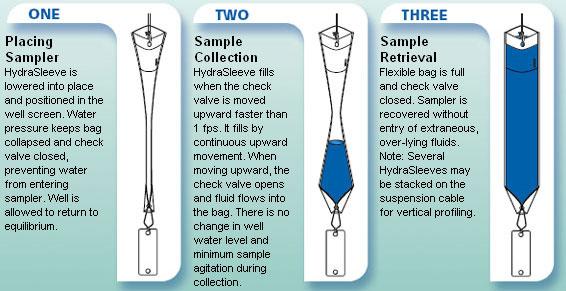Monitoring Bores
We drill specialised holes called monitoring bores into the ground. These bores are designed to reach the aquifer we are interested in understanding and may be over 100 metres deep. The bores include a casing to stop the bore collapsing, and headworks to allow us to measure inside the bore. A filter-like section of the bore, called a screen, allows groundwater to enter a bore from an aquifer at a targeted depth.
Choosing where to place a bore
Ideally, groundwater monitoring sites are spaced sufficiently to capture trends and conditions over an area of interest such as a flow system, aquifer, or management area.
Monitoring bores should be designed, constructed, and spaced to understand the variety of conditions that occur, not just in a single spot. We avoid placing bores too close to the cone of depression from pumping bores that draw down the aquifer locally.
To characterise the direction and speed at which groundwater flows across an aquifer, at least three bores are used monitoring the same aquifer.
In some locations we place multiple bores within a few metres of each other. These nested bores open at different depths to observe the relationship between different aquifer units such as their connection, response to pumping, and recharge mechanisms. Generally, two or more nested bores are used in the same or separate aquifers depending on what is being investigated.
In areas where the water level (or pressure head) in a shallow bore is higher than a deeper one, there is potential for water to move downwards if there were a path to do so. In areas where the level, or pressure head in deeper bores are higher than in shallow, then water may move upwards. Nested bores let us understand the gradient or direction of this vertical movement.
Be sure to zoom right in on a monitoring site to know if more than one bore is present.
Measuring water level manually
One of the most common measurements we take is the water level in the bore. We use a long tape marked with measurements and a weight at the end. We lower the tape into the bore until it touches the water and then we read the water level from the tape. The tape has an electrical sensor on it. Water bridges the connection between two probes essentially at the end of the tape. This makes a beep sound when it touches the water.
Measuring water level with pressure sensors
We use special sensors installed in bores. These sensors work by measuring the pressure exerted by the water in the bore. As the water level rises or falls, the pressure on the sensor changes. The sensor can detect these changes and convert them into meaningful data. Complicated equations go into calculating groundwater parameters depending on the datum used, and nature of aquifers. Understand how we calculate groundwater level and elevation.
Sampling groundwater quality and chemistry
We also assess the quality of groundwater. This involves collecting water samples from the bores and analysing them with instruments in the field or by specialist water laboratories. We test for various parameters such as salinity, dissolved minerals, nutrients and contaminants.
It is important to get a representative sample from the aquifer each time we sample. The two main methods we use across our bore network are low flow sampling and passive sampling using a Hydrasleeve.
Low flow sampling
To collect a representative sample from an aquifer, we need to remove the stagnant water in the bore. We choose to use a low flow sampling technique to minimise wasting water in the bore. A pump is carefully lowered into the bore to the point we wish to sample and water is slowly purged. We regularly test the water until we are confident the sample is good and then we collect the sample for delivery to a laboratory for further analysis.
Passive sampling using a Hydrasleeve
A Hydrasleeve is a device that may be placed inside a bore to collect a representative sample without the need to purge the bore. These can be used to collect samples from aquifers where the water continually moves through the bore screen.
The Hydrasleeve is lowered into the bore to the point we wish to sample. A valve is opened to collect the sample and the Hydrasleeve is taken from the bore by the field technician. The water is then field tested and sent to a laboratory for further analysis.
Telemetry
To transfer data from bores in real time to our website, we use telemetry systems. It works by having water level or water quality sensors connected to a telemetry device such as a data logger with a modem. The data is transmitted from the bore to our website through various means such as radio waves, mobile phone or satellite networks. We publish the data to the Water Measurement Information System (WMIS) each day.
Reviewed 11 June 2024


